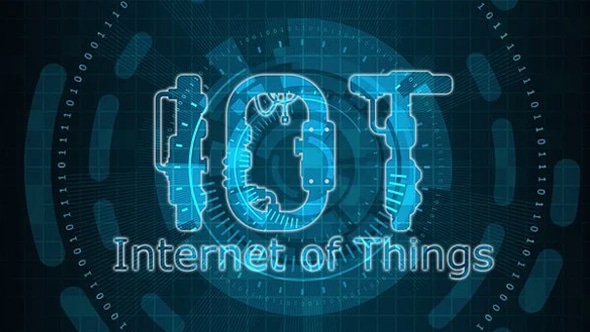The advances in medical science are such that now even machines can diagnose symptoms. The Internet of Medical Things (IoMT) can provide a great many benefits to patients and healthcare professionals. This article takes a quick look at its real-time applications, benefits, and the role IoMT can play to fight COVID-19. It also lists popular IoT devices used for the healthcare industry.
The Internet of Things is all around us today, making devices connect with and talk to each other. And now it is also possible to remotely monitor a patient’s health with the help of IoT embedded devices, sensors, actuators, etc, thanks to the Internet of Medical Things (IoMT).
IoMT allows healthcare professionals to access personalised information of their patients using a variety of tools. These tools enable them to track devices, sensors, perform remote patient monitoring, practice telemedicine, provide connected assistance, perform online diagnosis, and eventually help to manage their patients’ health more efficiently. Patients can get all the medical services from a healthcare specialist sitting at a remote location.
IoMT also helps to monitor, inform and notify not only patients but also healthcare providers with actual data to identify issues before they become critical, thus allowing for earlier prevention. However, IoMT isn’t intended to replace the current healthcare professionals but to provide them with the data gathered from devices for better diagnoses and treatment plans, as well as to reduce inefficiencies and waste in the existing healthcare system.
The benefits of IoMT are listed below.
Remote equipment configuration: IoMT can be used to remotely monitor the patient whenever the physical accessibility of the doctor becomes difficult.
Improved patient engagement: IoMT technology also helps the patient in self-monitoring and collecting the necessary information, e.g., a smart thermometer can help track and collect information right from patients’ homes and also assist in telemedicine.
Identify patient needs and provide tailored services: IoMT provides the facility to check symptoms in a customised way. As an example, if a patient has diabetes but does not want to measure his heartbeat, IoT gadgets can be customised to do that.
Improved decision making: The use of analytics and machine learning in IoMT can improve decision making.
Helpful for neuro-technology: IoT devices are capable of reading brainwaves and mood-elevating neuro signals. Thus doctors can use them to track and monitor the mental health of patients from a remote location.
Improved treatment: It enables physicians to make evidence-based informed decisions and brings absolute transparency with respect to treatments.
Infant monitoring: IoT enabled wearables can monitor and transmit an ill infant’s temperature and sleep patterns, which can help doctors to respond accordingly.
| Name | Functionality | Applications |
| Awair | Air quality sensor that can trigger alerts to the smartphone in case of poor indoor air quality. | Can be used for patients with asthma and allergies. |
| Fitbit | Wearable health and fitness tracker. |
Helps to track fitness goals such as calories burnt, calories consumed, heart rate, feet walked, etc. |
| GlowCaps | Keeps track of scheduled medications. | Reminds the patient when it is time to take their medicines. |
| Automated Device For Asthma Monitoring And Management (ADAMM) | Wearable technology that provides a complete solution for tracking, managing, and monitoring asthma symptoms. | Gives the patient real-time data for monitoring asthma. |
| Leaf healthcare ulcer sensor | I/O medical device with a tri-axial accelerometer sensor. |
Senses sitting position, and sends an alert when it’s time to get up and move after sitting for long. |
| Table 1: IoT devices used in healthcare | ||
How IoMT can help in the fight against COVID-19
IoMT can help healthcare professionals provide medical care for patients who have to be quarantined in the current pandemic. It allows healthcare professionals to access personalised information of their patients using a variety of tools. These tools enable them to track devices, sensors, perform remote patient monitoring, prescribe medicines, provide connected assistance, make online diagnoses, and eventually help manage their patients health more efficiently.
Here are some of the ways in which IoMT can be helpful in combating COVID-19 and other related medical health issues around the world.
- Facilitate diagnosis from a remote location: IoMT enabled wearable devices can help healthcare specialists treat patients in the self-isolation period from a remote location, and thus reduce their exposure to COVID-19. Based on the need of the patients, IoMT devices can track health problems such as diabetes, high blood pressure, heart failure risks, etc.
Thermal imaging: Thermal imaging technology with sensors mounted on drones can be extensively used at public places such as hospitals, restaurants, office buildings, etc, to track the temperature of incoming and outgoing individuals and send them to healthcare specialists for better monitoring. - Assist in social distancing: IoMT can also be used for social distancing measures. For example, if too many people are gathered in public locations, an alarm can be programmed to go off and alert the expert team about it.
- Real-time tracking: IoMT devices can be used for real-time monitoring of the number of patients who have recovered, number of deaths, and the number of active COVID-19 cases.
- Reducing the workload of healthcare professionals: The IoMT devices can help in collecting and analysing data with the use of AI and machine learning. This will help to reduce the manual workload of healthcare professionals.
Popular IoT devices for healthcare
IoMT devices are available for a wide range of applications in the healthcare industry and play a vital role in improving clinical outcomes. Table 1 gives a list of the most popular IoT devices used in healthcare, which can play a significant role in helping a patient get proper medical services.










































































